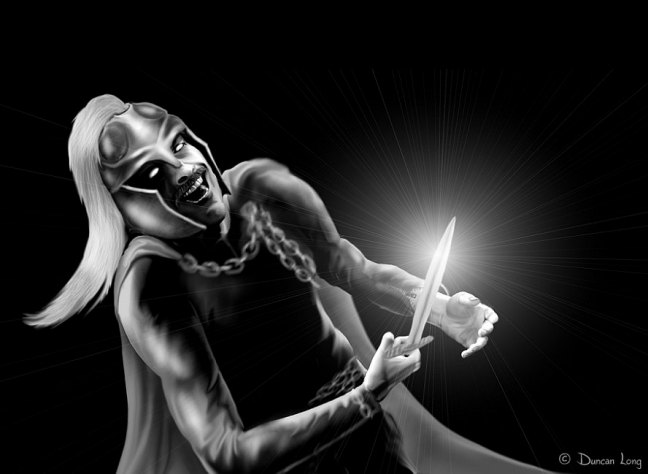Time is money — and you can also live a lot more life if you don’t waste large chunks of it.
And a lot of time can be wasted on a computer. No, I don’t mean surfing and such (though if the shoe fits…), but rather squandered time lost through extra keystrokes and needless mouse gestures that may be just a few seconds lost here and there, but which over a week’s time, can amount to hours. Hours without anything to show for it, other than tired fingers and cramped wrists.
Now I don’t have all the answers to this problem — and part of it is poor design work from software and hardware engineers who seem more interested in making things pretty and spacey rather than convenient to use.
But part of the loss of time occurs because we don’t stop to ask “is there an easier way?”
I’ve been asking myself that the last few years, and I’ve discovered several quick ways to enjoy greater productivity, and also while experiencing a lot less frustration while working. (My apologies to Apple users — many of the methods outlined below will apply only to Windows users, though some will also apply to Apple machines.)
One is to get rid of all the menus and junk that otherwise clutter a screen and learn to use shortcuts. I am amazed to see artists and writers using browsers, paint programs, and word processors with huge toolbar “buttons” that require a mouse to be engaged to use them. Ditto for large collections of “palettes” that eat up monitor real estate. A better route is to lose these toolbars and palettes and use keyboard shortcuts whenever they’re available. These not only make for a less cluttered screen, they’re also much faster than searching for a tiny section of the screen and clicking on it with a mouse or graphics pen.
Likewise, an action like closing a program (on Windows a Alt-space key C does this) is a lot easier than using the mouse to find the tiny “X” at the top right corner of the screen — yet you see workers doing the latter all the time, day after day. I am certain that a keyboard shortcut will beat a mouse/screen button combo all day long, not to mention putting a lot less wear and tear on your wrist ligaments.
And with Windows, putting the Start bar an “auto hide” and to the top of the screen rather than at the bottom, quickly buys a chunk of screen space as well. (And the menu bar won’t be missed with the programs listed below.)
Some people need the Start bar to see what time it is. But a solution that I prefer — and which saves some more screen real estate — is to just place a cheap clock by my computer. I can even tell the time with the computer off.
In Windows and going from one open program to another? Using Alt-Tab is a whole lot faster than going to the start menu bar and clicking the program tab on a mouse.
Making the Title Bar and lettering on the menu bar smaller can buy some more screen real estate. Ditto for the size of the “X” and minimize/maximize buttons on the Title Bar as well as the scroll bars — all of which can be done away with using either a keyboard shortcuts (some in the programs listed below) or by toggling with Alt-Tab between programs rather than minimizing one to get to another.
Second, I use macro programs (currently the free AutoHotkey at [link] ) to remap my keyboard and add a variety of keyboard shortcuts. These also speed things up. I can use a single keystroke to launch common programs, adjust the volume setting, go to a news site — no mousing to the Start column etc., etc. These give very noticeable gains in productivity and are totally free.
AutoHotKey permits changing the nearly useless cap key to a delete key and changing the F1 (equally useless) Help key into a Return button. That means if I am using the mouse, I can delete and Return without letting go of the mouse or having to reach across with my left hand to search those keys out.
I pulled off what I feel are useless, and apt to cause accidents in typing, keys from my keyboard — greatly saving retyping (along with changing the Caps key to a delete key). The “Insert” key is pulled along with the Windows menu key, Scroll break, etc., keys that were never used or frequently hit by mistake.
I have also modified my keyboard for easier “touch typing” by putting large dots from a glue gun on the Escape, F5, Home, End, Delete, and Windows keys. Now they can all be found without looking and mistakes are much less frequent.
I got a “small footprint” keyboard (the “Mini Thin Keyboard” available at a variety of places including [link]) that has keys smaller than standard keyboards (which works fine even with my ham-fisted paws).
This keyboard really speeds up typing. Its size means if I need the arrow keys, they are right next to the keys my right hand is on rather than WAAAAAAAY over there like on the allegedly “improved” IBM keyboard (which is not improved compared to the original IBM PC keyboard as far as I’m concerned). This keyboard is also light so I can put it on my lap, lean back in an easy chair, and type. (I would bet an easy chair recliner would boost productivity — but bet corporate America won’t be putting those in cubicles any time soon – ha.)
And it balances on my lap, unlike the lopsided, ban to the existence of the left-handed, 101-key IBM style keyboard.
A three-button mouse with a scroll key really speeds up mouse operations (Apple users take note).
AutoHotkey is a software program that allows “remaping” some mouse actions as well. For example, if I want to quickly go through a document, I can hold down my shift key and make the mouse scroll wheel go for a page with each cog turn rather than just three lines. And pushing down the middle button the scroll key is on takes me to the top of the document; a shift key (left hand) and the middle mouse button click (on the right) takes me to the end of the document. These are especially useful in navigating web pages.
The savings over a day’s time can be tremendous with AutoHotKey. Rather than use the mouse (or Windows/arrow keys/Enter keys) to go through the “Start”, open a group, search for my program, click on it routine to launch a program routine, I can do a Windows-W to launch Word, Windows-P to launch Photo-Paint, etc., etc., etc. One key stroke can open one program (or several that I use together).
Just one stroke. This is the way a computer SHOULD be. You make it jump through the hoops instead of slaving away to get it to launch a program.
AutoHotKeys means that when I need to do a Google search, I do Windows-1 and not only launch my Browser, but see it open to the Google search page. If I need to see the news, Windows-3 launches my browser and opens my three favorite news sites. Windows-6 opens six of my favorite art web pages. On and on it goes with a variety of keyboard macros to handle tasks I do day in and day-out at the computer, from quickly opening plugins, to adding a signature at the end of a document, to “typing” passwords, etc., etc., etc.
I use StrokeIt (another freeware program — I have Scottish blood in my veins, after all — at [link] ) which permits holding down the right mouse button and going left to go to a previous web site, file, etc., etc., depending on the program it is in, draw a “C” to close a document, draw a “W” to close a window, etc., etc. And since it works on a graphics pad, it also allows streamlining operations in art programs and such.
StrokeIt permits quick navigation, especially in a browser or File Explorer. On the latter for example, a left stroke takes me to the previous menu, and up stroke takes me to the next folder (or drive) step up from where I am — a small modification, yet it allows me to zip through nestled folders and jump around much more rapidly than can be done with the search and click method Microsoft gave us.
A lot of time is wasted waiting for a computer to boot up. Shutting down your computer into “hibernate” or “standby” mode leaves it in an almost instant on state. And also saves your desktop so you don’t have to reopen programs. And when you do have to boot, placing shortcuts to programs you use all the time will have them open and waiting for you when you come back with your cup of coffee or other chore done so you don’t have to stand around waiting on the computer to boot up.
Since most of my work (both art and writing) is on “page” printouts, I got a video card that permits me to turn my monitor on its side, thereby giving a “page view” of what I’m working on. Coupled with getting rid of needless menus, this makes for a huge “page” view of what I’m working on, a nice “multiple” page overviews of a document, and so forth. I suspect that this up/down view of a page is equal to that of a 30-inch monitor — only on my much cheaper 19-inch. Sure, I don’t have room for the various palettes, toolbars, and menus that many artists and writers have open. But, of course, since I use keyboard shortcuts, I don’t often need most of those.
Bringing me to my final suggestion. If you can afford a larger monitor, it will save you time. That said, I suspect a majority of people working on a computer could see huge boosts in their productivity by employing the techniques (orthodox and unorthodox) outlined above to great advantage — and without the expense of a new monitor.
Saving time makes it possible to do more with the few precious hours you have each day. It can also make for a less hectic and more enjoyable experience when working at the computer. That makes it worthwhile to give a little thought at how you can streamline your work at a computer.
=====================
Duncan Long is a freelance book cover illustrator for HarperCollins, PS Publishing, Pocket Books, Solomon Press, Fort Ross, and many other publishers and self-publishing authors. See his cover illustrations at: http://DuncanLong.com/art.html
=====================




